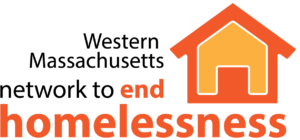Individual Services Committee
March 5, 2015
In attendance: Matt Castleman, SMOC, Tanisha Collins, Friends of the Homeless, Jonathan DeMars, Friends of the Homeless, Erin Forbush, ServiceNet, Todd Koniezhny, HRU, Janice Humason, Friends of the Homeless, Nichole King, Friends of the Homeless, Charlie Knight, consumer, Jay Levy, Eliot CHS-Homeless Services, Gerry McCafferty, City of Springfield, Patty McDonnell, SMOC, Katie Miernecki, ServiceNet, David Modzelewski, Network, Donna Nadeau, DHCD, Lizzy Ortiz, City of Springfield, Claudia Phillips, Health Care for the Homeless, Jerry Ray, Mental Health Association, Denise Rivera, Friends of the Homeless, Laura Saponare, Catholic Charities, Pamela Schwartz, Network; plus special guests from Father Bill’s and MainSpring
Zero 2016 campaign: Gerry McCafferty provided an update on the campaign. Shared the “take down targets” based on the campaign’s formula that estimates the number of homeless to anticipate in 2015 (using 2014 PIT count as basis) and therefore how many homeless veterans we need to house each month. This goal of “zero homelessness” factors in that there will always be some new homeless veterans/individuals coming into the system; the definition of success is becoming re-housed within 30 days. Every month data will be pulled from HMIS and follow-up will occur to help ensure a complete count of who got housed on a monthly basis.
Hampden County has a total of 110 individuals/veterans it will need to house by the end of 2015/16. Currently, there are 33 veterans in the system, 16 in transitional housing programs, 17 in shelter (many at the Rescue Mission). It will be especially challenge to get veteran homeless population down to zero due to the high number of Grant Per Diem (GPD) beds (transitional housing) in the area. We also discussed the additional challenge of housing veterans who are not eligible for veteran services.
The next step is assigning “housing navigators” to these homeless individuals. This can be especially challenging when there are people who are barely tied to the system with minimal interaction. It will take one-on-one engagement to move these people forward in housing.
The campaign is offering trainings on the VI-SPDAT. Gerry will send out the information to the group. She will also include information on a documentary on homelessness to be aired on WGBY in late March which highlights the 100,000 Homes Campaign and its success in NM.
Springfield ESG grant planning: Gerry confirmed that she sent out a survey around ESG grant planning. She is interested in hearing feedback about how to allocate the additional $20K the City is receiving, specifically whether to use it to support the hire of an outreach worker and/or to support medium-term rapid re-housing with longer subsidy support (closer to 12 months of assistance).
We also discussed the possibility of the housing subsidy being tied to enrollment in the Secure Jobs program, i.e., better chance of long-term sustainability with employment support.
The RFP will be released on 3/18, due 4/15. Funding will include outreach, rapid rehousing short-term, medium term and shelter operations.
Hampden CoC coordinated entry work group – This group met once so far and is meeting again next Tuesday, 3/10, 1 pm, FOH. The group discussed different levels of assessment, what needs to be known to divert people from shelter, at the front door, and what needs to be known to assess whether they need Permanent Supportive Housing. The next meeting will include review of front door assessment tools (housing triage) that is less intensive than the VI-SPDAT to allow for immediate assessment of first steps.
Emergency Shelter Update:
Everywhere is full and in overflow. FOH has been in overflow for over a month. Sheltering well over the “normal” 150/night.
ServiceNet’s 20 beds in Northampton in overflow (20 beds).
Discussion with Father Bill’s and MainSpring: We had the fortunate coincidence of our regular meeting intersecting with Father Bill’s (from the South Shore, Quincy/Brockton) touring of Friends of the Homeless. So we enjoyed a spontaneous visit and exchange with a group of 5 visitors from the South Shore shelter system.
Father Bill’s shared about their triage system for individuals: for the last year in Quincy (and more recently in Brockton) they have implemented a triage system that includes “assessment specialists” who assess housing needs immediately upon arrival. If it is determined that the individual needs shelter, s/he is then seen by a triage worker. They have found substantial success with this model, diverting about 50 people from shelter to housing in Quincy. They are seeing more young adults coming into the system.
Capacity:
in Quincy: state funding pays for 75 beds; they sleep roughly 140/night
in Brockton: state funding pays for 51 beds; they sleep roughly 170/night
9% of long-term stayers take over 50% of beds.
Father Bill’s has 360 PSH units; small % are families. These units came into the system between 2004-2008 and the challenge is how to move people on who need the subsidies but no longer need the services.
Re: coordinated intake and assessment: they will use the VI-SPDAT but with a supplemental tool (to offer more complete assessment). Because they are the only shelter in town, coordination is a lesser challenge.
They have also found the VI-SPDAT too intrusive for rapid rehousing, so they are looking at different assessment tools for housing triage (as is Hampden County).
The challenge is how few actually qualify for rapid rehousing since so many have no or very limited income, making sustainability extremely challenging.
Next meeting date: Thursday, 4/2, 10:30-noon, Northampton Senior Center

